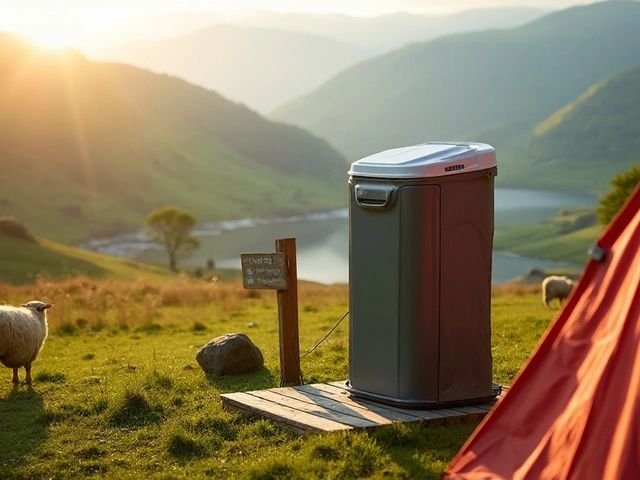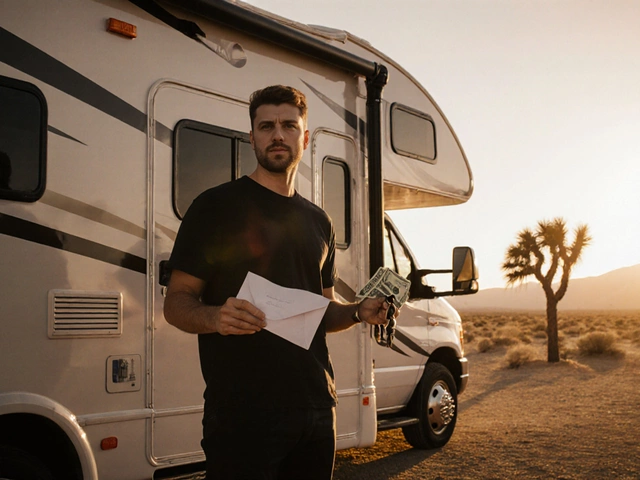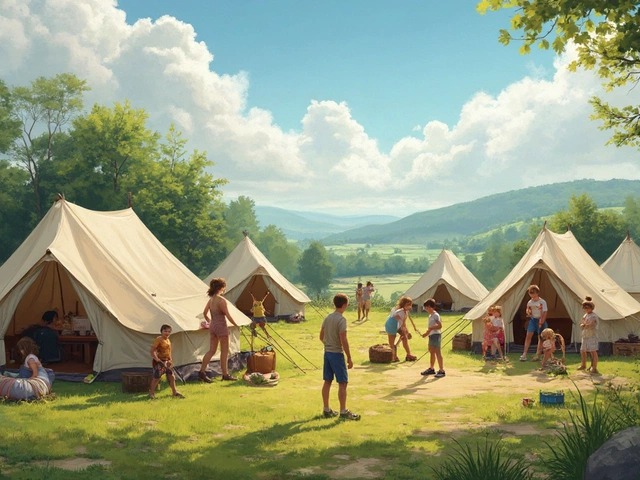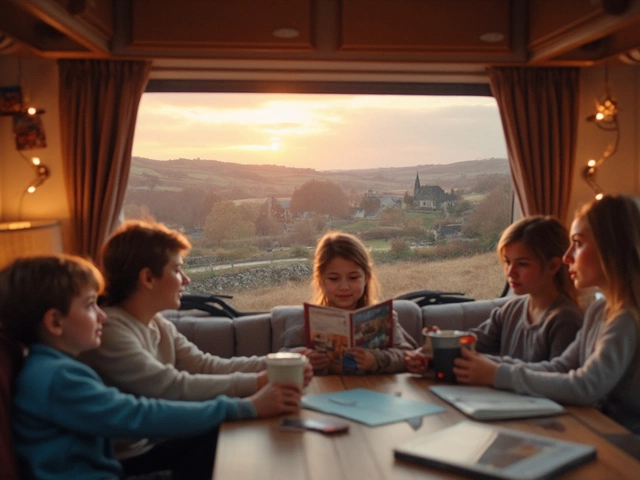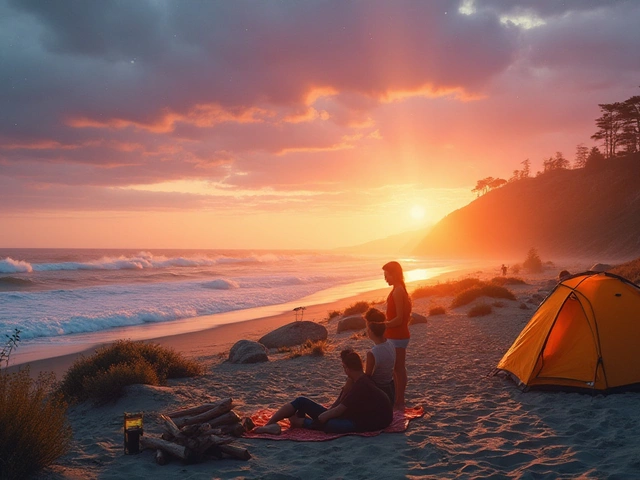Forget warm coffee, phone games, and lighting once the sun sets—no electricity at a campsite makes all these tricky. The modern camper expects at least a way to keep the essentials going, whether it’s a van loaded with tech or just a USB fan to keep the air moving in a humid tent. But the whole idea of campsite electricity seems wrapped in mystery unless you’re the type who reads circuit breaker manuals for fun. Why do some pitches have a plug for your phone charger while others leave you fumbling for spare batteries? Let’s crack open how electricity actually gets to the wild, what you can expect at popular campgrounds, and how to master the current without zapping your gadgets or burning the toast.
How Electricity Actually Gets to the Campsite
Campsite electricity doesn’t magically appear. Most established campgrounds—think state parks, RV parks, and certain national forest sites—pull power straight from the main electrical grid, just like your home. But that doesn’t mean you get a wall outlet behind every tree. Campgrounds lay down underground cables, connect transformer boxes at certain intervals, and set up distribution pedestals or posts all over the site. When you pick a spot with ‘electricity,’ you’re really getting access to one of these tough plastic or metal posts.
The power at each site—especially those catering to RVs—often comes through outlets labeled 20, 30, or 50 amps. Here’s where it matters: 20 amp outlets look just like your living room plugs (standard three-prong), 30 amp ones are a bulky circular shape favored by mid-size RVs, and 50 amp outlets are for the real power-hungry rigs. If you pick the wrong cable or adapter, expect a confusing trip to the campground office. For regular tent campers, sites with electricity usually mean access to a 20 amp outlet or sometimes a communal power tower—where campers queue up to charge their phones, eBikes, or lanterns.
Now, you’re probably wondering what these amps actually do. The higher the amp rating, the more stuff you can run at once. A 20 amp outlet might handle a couple of phone chargers and a fan, but not a 1400-watt toaster and a hair dryer at the same time. You’ll find signs everywhere warning not to overload the circuits—blow the campground’s breaker, and you just made some new grumpy friends.
And what about sites in the real wild? Many primitive or backcountry sites have no hookups at all. Here, it’s DIY time: solar chargers, thick battery packs, and compact generators become your best friends. Each has its quirks, which we’ll get into soon.
If you ever wonder how widespread basic power is, here’s a look at the numbers. The National Association of RV Parks says about 91% of RV parks in the US offer at least some sites with electrical hookups. Meanwhile, most public parks are playing catch-up: as of 2024, less than half of US state park campsites have electrical service at the specific site, though common areas like bathhouses often do. That means if you want reliable power, it pays to check the details—and maybe pack an extension cord or two.
Power Sources: What Campers Can Actually Use
The fun (and frustration) of camping starts with choosing your power source. If you scored a spot with a hookup, there’s usually a safe, tested outlet nearby. Plugging in at these sites is straightforward: use a heavy-duty extension cord meant for outdoor use, never anything frayed or from a dollar store. Most folks use a surge protector, just like at home, because unpredictable power surges can fry laptops or camera chargers in moments. In fact, a study by the Electrical Safety Foundation International found that portable surge protectors lower the chance of device damage by 78% in rough power environments like campgrounds.
For RV and campervan users, life is easier and trickier at the same time. Most RVs have a built-in power management system that switches between battery, generator, or direct electrical hookup. If you connect your RV to a 30 or 50 amp hookup, you get access to more powerful appliances like microwaves or air conditioners. But here’s the catch: run too many things at once, and the main breaker (either in your RV or at the site’s pedestal) will shut off everything in a heartbeat. RV owners swear by energy management—making sure not to brew coffee, charge bikes, and run air conditioning all at once. Add in weather-wear (rain, heat, or freezing temps) and you’ll see why regular inspections matter.
Now, what if you end up somewhere with zero hookups? The options shift a bit. Portable generators are a classic, but these come with headaches: they’re loud, can bother neighbors, and most parks restrict their use at night. Modern lithium battery stations offer a quieter solution. Some models can power a small fridge, CPAP machine, or recharge devices several times before needing a solar or wall recharge. Solar panels have improved—lightweight folding models work well on sunny days. Pair them with a quality battery and you’re set for a phone-heavy weekend or running low-power LED lights all evening.
Here’s something most people miss: Car power inverters. Plug one into your car’s cigarette lighter and you get 100-500 watts of pure juice, enough to run a laptop or charge drone batteries if you’re careful. Just don’t run the car engine all night, unless your goal is a dead battery and a new roadside story. Campers planning to use generators or large inverters should check park rules carefully: quiet hours and maximum decibel limits are the official language of park rangers handing out tickets.
Still weighing your options? Here’s a table comparing the things most campers ask about:
| Power Source | Typical Output | Noise Level | Best For | Key Tip |
|---|---|---|---|---|
| Hookup (Grid) | 20/30/50A | Silent | RVs, Car Campers | Bring surge protector |
| Portable Generator | 1,000-3,500W | Loud | Off-grid, backup | Check park rules |
| Solar + Battery Station | 300-1,000W | Silent | Tent Camping | Charge during day |
| Car Inverter | 100-500W | Low (engine needed) | Short device charges | Don't drain car battery |
The right tool depends on your camping style: luxury RV life with blender breakfasts, or off-grid simplicity where a charged smartphone feels extravagant. And yes, the campsite electricity setup you pick—plug, solar, or generator—will make or break your trip if you don’t match it to your real needs.
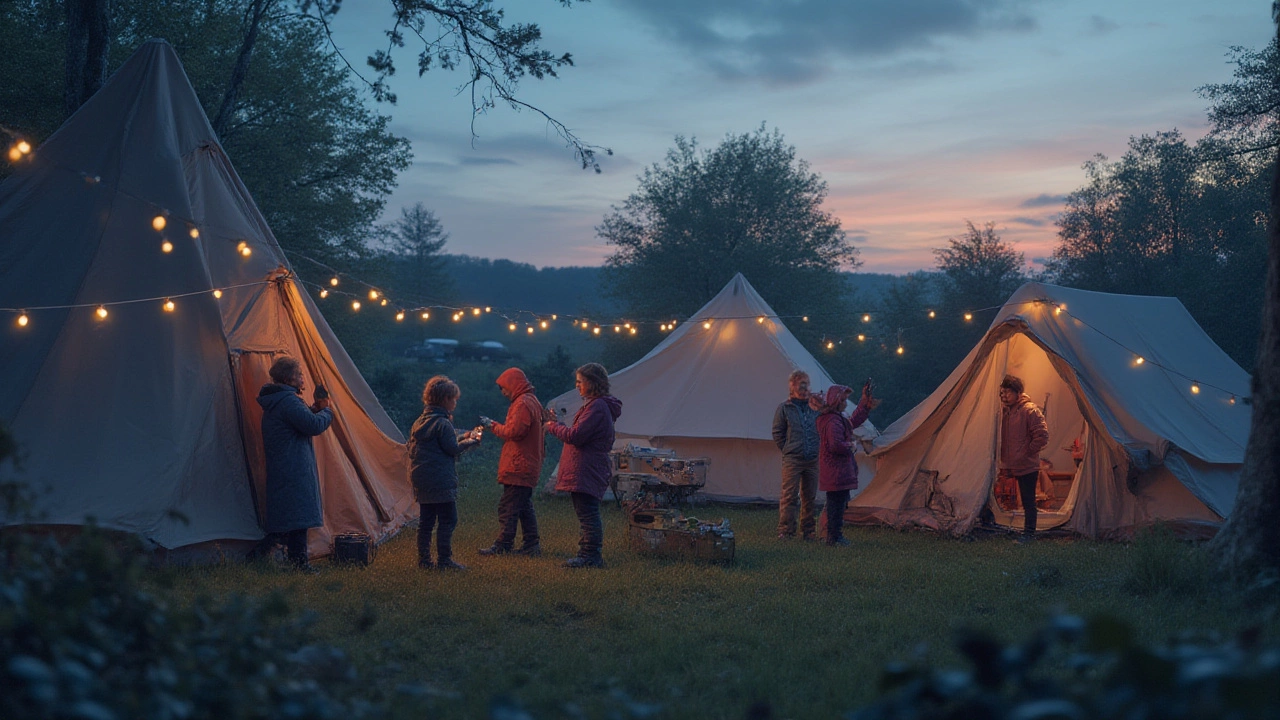
Safety First: Smart Electrical Habits While Camping
Nothing ruins a trip faster than a fried laptop, a popped breaker, or a meltdown caused by wet sockets. Campsite electricity carries the same dangers as household power, with a few added twists: outdoor moisture, animal mischief, and cables running across everywhere. These make smart electrical habits more than just a good idea—they’re essential for a safe trip.
Start with your own gear. Don’t count on the campground’s setup being flawless; weather and rodents do a number on outlets and cables. If you spot a cracked or corroded outlet, tell the camp host—don’t risk it. Secure all connections off the ground, and use outdoor-rated cords. Pro tip: a $5 roll of electrical tape can keep cords safe and dry if a rainstorm hits. And don’t cover running cables with rugs or clothing—heat build-up melts insulation, which sounds minor until it shuts down the entire row of campsites.
Water is the oldest enemy of electricity. Many people ignore the importance of keeping all connections dry. If you’re camping in a tent, run extension cords through a zipper flap—never under the tent base where dew collects. For RVers, check that your shore power cord is tight and dry, and if it feels hot, unplug immediately. Always look for GFCI outlets (the kind with a TEST and RESET button), since these automatically cut power if there’s a ground fault, such as water intrusion.
What about extension cords? Never daisy-chain multiple cords together—the resistance stacks up, and cords can overheat. Stick to one high-quality cord, preferably with a lighted end so you know it’s live. At a busy campsite, someone always trips over a cord after dark. Secure it with stakes or cable clips, not rocks that can cut the insulation.
Be on the lookout for tiny nibblers, too. Squirrels, mice, and raccoons view wires like chew toys. If you see bite marks or exposed copper, stop using that cable. The Consumer Product Safety Commission links nearly 1,800 outdoor electrical fires each year to animal damage and worn cords at campsites.
Here’s a quick checklist for safe electrical use at the campsite:
- Always pack an outdoor-rated surge protector and extension cord.
- Inspect campground outlets before use, and report any damage.
- Keep all cords dry and off the ground—never let cables sit in puddles.
- Don’t overload the circuit; check amp limits, and ask if you’re not sure.
- Secure cords out of the way to avoid trip hazards (both for people and pets).
- Unplug everything during lightning storms.
- If you smell burning or see smoke at a power pedestal, unplug quickly and find help.
Remember, electricity is just as much about safety as convenience. Pay attention, and you’ll keep your trip memorable for the right reasons.
Best Ways To Get The Most Out of Campsite Electricity
So, you finally have access to electricity at your campsite. Now comes the smart part: getting the most out of your setup so you can kick back and actually enjoy the outdoors. Knowing how much you can run on a campsite circuit is where most first-timers mess up—they pack air fryers, fans, and string lights, then wonder why the breaker keeps flipping. Each device you plug in adds up to a total—blow past that (for instance, overloading a 20 amp post), and you ruin the power for everyone sharing that circuit.
Start with the basics: Figure out what you need versus what’s nice to have. Most people only need enough juice to charge a few devices, keep lights going, and maybe run a small fridge. Anything beyond that—think portable heater, coffee maker, or mini projector—should be run one after the other, not together. A 1,000-watt hairdryer pulls about 8 amps; a typical campsite post on a shared line might only allow 15 or 20 amps total. Toss in a portable fridge (5 amps) and some mood lighting (1 amp), and you’re suddenly pushing the limits.
Packing is where planning matters most. Bring a simple plug-in wattmeter (they’re small and cheap) to test how much your gear actually draws. Even seasoned campers get surprised by power-hungry gadgets. If traveling with a group, plan a charging schedule—everyone plugging in GoPros and eBikes at once spells disaster. If the weather looks iffy, use waterproof covers for your extension cord ends. A plastic bag and zip tie work in a pinch, but a proper cover costs less than a fancy coffee and saves you the panic when clouds roll in.
Want to go off-grid for longer? Pair a decent solar panel kit with a high-capacity battery power station. With a 100-watt panel, you can generate enough power over a sunny afternoon to recharge three smartphones, a tablet, and even keep LED camp lights glowing into the night. If you’re going the generator route, pick an inverter generator—they produce cleaner electricity, safe for sensitive gadgets like laptops and medical devices. Just be courteous: position them downwind, far from tents, and obey ‘quiet hours’ or risk a lecture from the neighbors.
Let’s talk about device charging. Don’t count on every USB outlet being ‘smart’ or fast-charging. You’ll often get a slow trickle charge at a lineup of campers. Bring your own favorite charger, preferably with multiple outlets and surge protection. If you bring a CPAP machine or anything essential, look for backup battery options designed for medical devices.
And when campfires are done and the sun’s down, LED lanterns are a game-changer—low power draw, super bright, and can usually run off a shared battery pack for several nights. If you love the twinkle of string lights around the picnic shelter, count the amps—some sets can pull more than you’d expect, especially the older ones not designed for camping use.
Ultimately, the secret to getting the most out of campsite electricity isn’t squeezing every last watt—it’s using what you have efficiently, staying mindful of limits, and planning for the unexpected. Miss a beat here and you could end up reliving your grandpa’s camping stories—by candlelight, wishing you’d packed more batteries and less hope.


